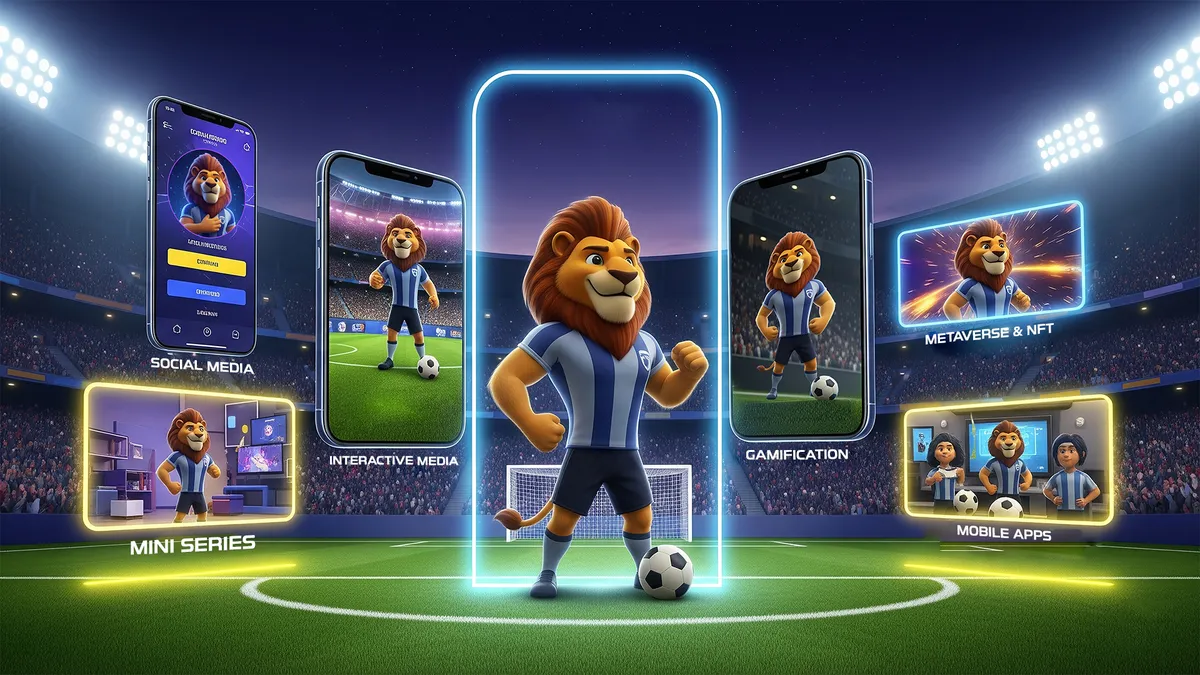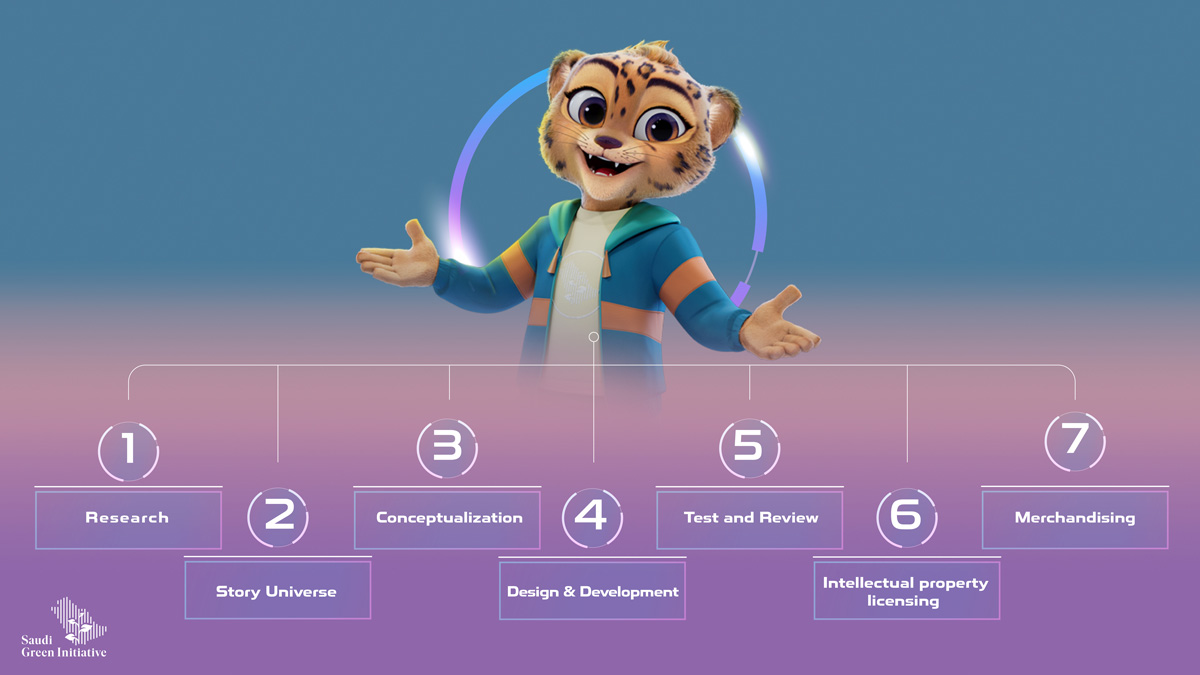
Imaginative characters are more than just animations—they’re a form of intellectual property (IP) with a life of their own. While they’re used in everything from games to education, their role in branding is particularly powerful. To understand this, it’s essential to first know what brand mascots are, as they are a prime example of IP characters in action
In this blog, we’ll dive into the world of IP characters: what they are, how they’re created, and why licensing them matters. Whether you’re in business, entertainment, or beyond, these characters have the power to leave a lasting impression.
Let’s explore how they make it all happen.
Definition of IP Character
IP, in this context, stands for Intellectual Property. An IP character is usually fictional or stylized and owned by a brand.
As mentioned earlier, businesses can use their IP characters in various forms of media for different purposes.
The most significant attribute of an IP character is that it is protected by law. In simpler terms, the brand has no concerns regarding the character being stolen by a rival or a business in a completely different industry. If any company takes the risk and uses another business’s licensed IP character, it must stand before a judge in court and answer for the committed violation.
Note that a character isn’t limited to its appearance and visual design. When a company licenses its IP character, it takes ownership of everything related to that fictional creation, including the background story, voice, gestures, etc.
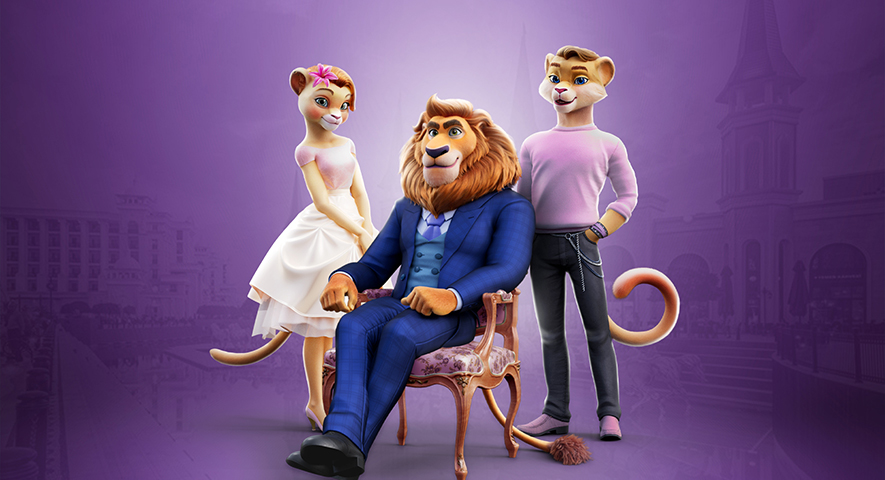
Character licensing significantly reduces the risk of unauthorized use but does not eliminate it entirely. Legal enforcement depends on jurisdiction, and weaker copyright laws in certain regions can still allow for infringements.
Let’s step forward and examine the advantages of such characters for a business.
What are the Benefits of Having an IP Character for Your Business?
The benefits of an original character design are numerous. Let’s review them one by one.
Enhancing Brand Recognition and Recall
IP characters tend to be unique and one-of-a-kind. As a result, they serve the purpose of increasing brand recognition very well.
However, not all IP characters necessarily achieve this milestone. Only well-designed ones can aid the brand in this regard and help the business stand in the fiercest competition.
Bonding with Audiences Emotionally
Evoking emotions can take a business far ahead, and a good IP character can be helpful for this purpose.

Such creations typically evoke a sense of familiarity among target audiences and lay the foundation for building trust between customers and the business.
The more emotionally connected your business is to the target audience, the more likely it will be successful in various aspects.
Accessing Storytelling Opportunities
In many of our previous blogs, we have repeatedly discussed the necessity and benefits of storytelling. The good news is that IP characters are able to provide your brand with a wealth of opportunities to create charming stories around your brand.
You can use them at the core of stories to make them more memorable and narrate the story in a way that is more attention-grabbing.
Offering Cross-platform Possibilities
As previously stated, brands can use their licensed IP characters on various platforms, including social media platforms, advertising, physical packaging, urban displays, virtual influencers, etc.

This ensures brand consistency across diverse media, which is crucial to convey a sense of cohesiveness.
Increasing Engagement
Gaining user interaction is critical, especially in the digital landscape. IP characters can help businesses increase engagement efficiently.
People are likely interested in engaging with such creations in various media in different ways. So, inherently, IP character design is meant to attract attention and encourage users to interact with the content they consume.
Making Additional Passive Income
Besides the business’s primary commercial activities, IP character design offers a chance to generate additional passive income.
After licensing the character, you can utilize it on merchandise and earn a profit by selling it to your target audience.
This approach especially works if you are in entertainment and other similar industries.
Distinguishing the Business from Competitors
Due to the uniqueness of the IP character, which we discussed earlier, such creations allow your brand to differentiate the business from all other companies considered rivals.
A well-developed licensed IP character will become a key element of the branding and impact the orientation of other branding and marketing efforts.
In the next section, we’ll dive deep into the process of IP character design.
The Path of Creating a Well-Crafted IP Character (9 Stages)
Creating a good IP character is challenging and requires special skills. That’s why we suggest you outsource the job if your business lacks experts in this field.
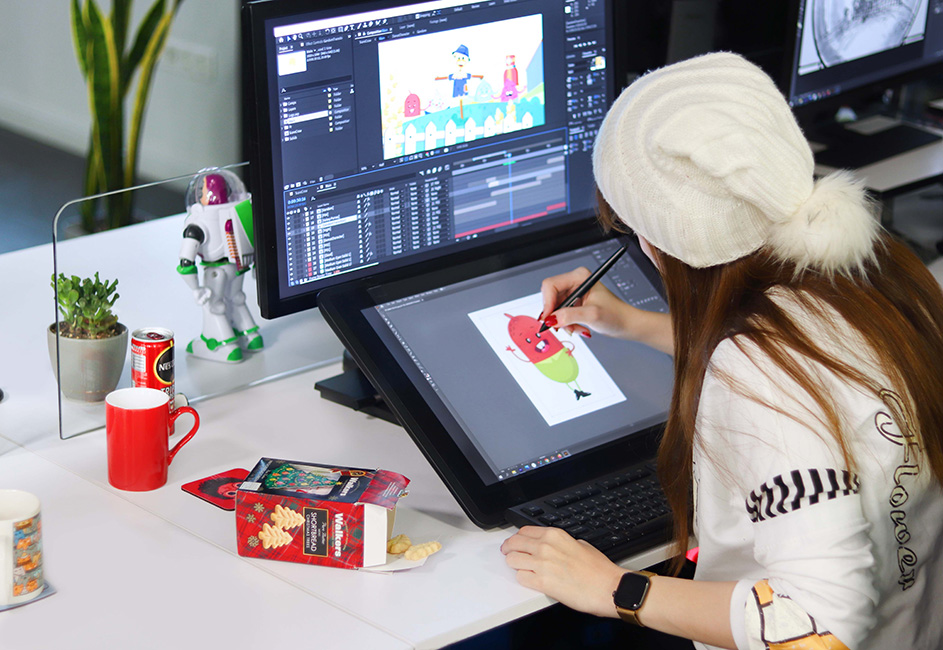
To demonstrate transparency, here is the process of making valuable intellectual property through nine stages.
1. Define the Purpose Clearly
As always, you must first set expectations and understand what you wish to achieve with this creation. It’s the first thing you and your team should invest time on before even considering any other details.
So, ask yourself: what’s the purpose of the character that will be made?
Think about the character’s role in your story and, in a broader picture, in your brand. Additionally, finding answers about the emotions you want to convey with this character will greatly help you and your team.
This stage is critical because clearly defining objectives will ensure that you lay the foundations properly at the very first step and that the outcome aligns with your vision.
2. Research Some Good Case Studies
One wise person doesn’t reinvent the wheel. That’s why you must start researching and reading about others’ creations.
Remember that your brand’s IP character must be unique. How can you ensure this without understanding the styles others have used and the paths they have taken?
Gather inspirations from IP characters that are widely known and have been functioning for several years now. Moreover, it would be great if you could also research some failures. Learning from others’ errors will guarantee you’ll never fall for those traps and commit the same mistakes.
In addition, experts suggest studying different art forms, myths, literature, and even the biographies of great individuals to gather more inspiration for creating characters with deeper personalities.
3. Sketch a Basic Concept
The operational phase of IP character design starts with sketching a basic concept. You can’t skip the previous two stages and jump straight to drawing. Clear objectives and inspirations are needed to proceed here.
First, gather the team and run a brainstorming session. Allow everyone to share ideas without censoring themselves. Ultimately, select a few brilliant ones and start sketching. Begin by drawing rough outlines. Remember, details aren’t important at this stage, so avoid overthinking them.
In simple terms, here, you should draw the initial appearance of the IP character, and nothing else matters. However, it’s suggested that some basic personalities and the raw backstory be defined in this phase, too.
4. Start Building
Now that you have the initial sketch, it’s time to start building it with specific software to bring it to the digital world. This is where the basic concept undergoes numerous transformations. Therefore, don’t be afraid to implement significant changes.
The original character design must be prepared to face different circumstances. In this stage, your team must work on various situations in which the character will be shown.
Read more: What should you do before creating your mascot?
For example, the character’s facial expression must sometimes convey sadness. On the other hand, there are times when the creation is happy, and the facial expressions naturally differ in such cases.
In summary, this stage is where you add depth to the personality of your creation.
5. Add Visual Details
Now, it’s time to add details to the character. Until this point, we emphasized avoiding considering minor information, but now you have to initiate adding them to deepen the character you’re building.
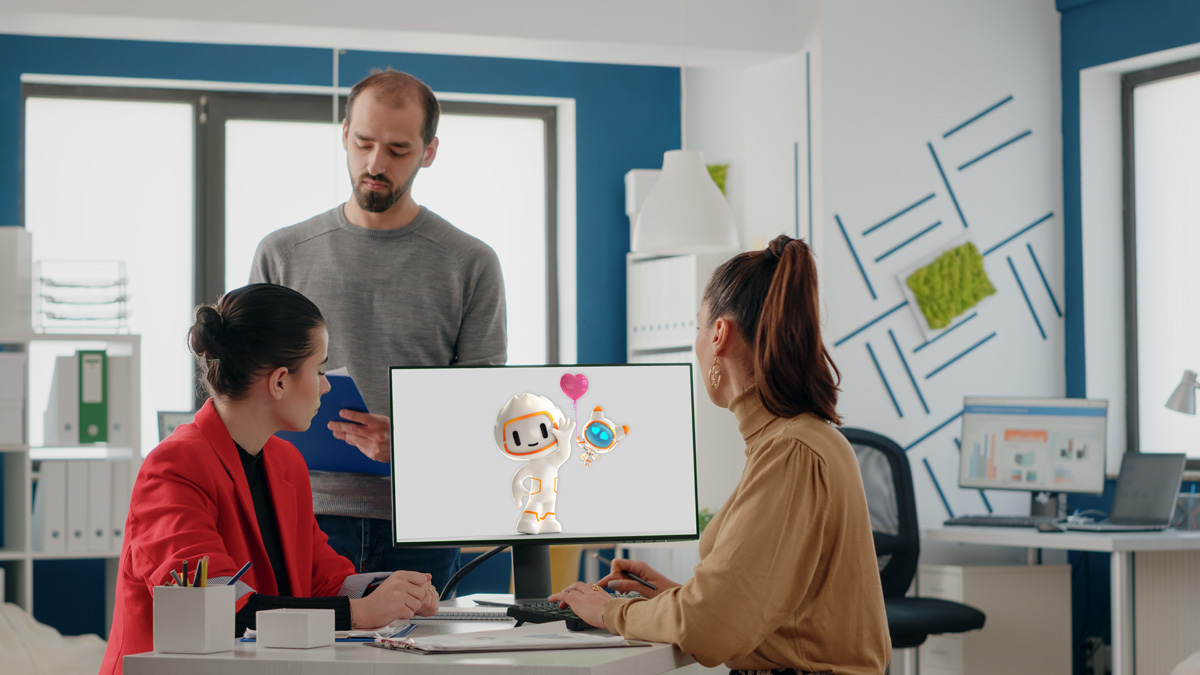
This stage is dedicated to visual elements, everything related to the character’s appearance, from how it looks to body shape and colors.
This is where you prepare the fictional character to use in various media and channels.
6. Create a Background Story to Add Depth
Besides detailed visuals, a good IP character design must be complemented by a well-crafted background story to add depth to the creation.
Keep your branding guidelines in mind when creating a story since the narrative should align with its principles.
Simply put, the IP character must play its role in a story related to the brand and remind the target audience of your business.
The more charming the story, the more impactful the IP character will be.
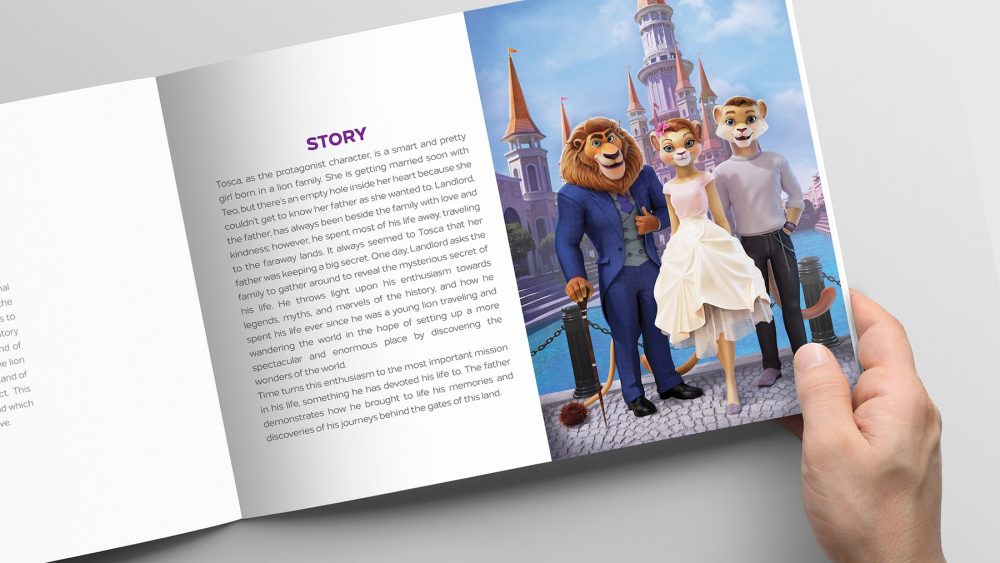
As a rule of thumb, experts suggest that the background story should include the origins of the character, its experiences, and all the events that shaped its personality.
Therefore, consider the characters’ goals, desires, fears, and motivations to steer the story in your preferred path.
7. Test and Collect Feedback
You’ve successfully created the character. But do your target audience and others agree with its success?
Testing the character on different platforms and collecting feedback is a crucial stage that can’t be neglected.
Surprisingly, most businesses receive many reviews that show their creations need to be refined to meet the market’s standards. While this feedback may feel disappointing, it’s actually an excellent opportunity to optimize the IP character to its highest potential.
In this stage, you’ll take the character to the real world and understand people’s feelings. Do they adore it just the way you do? Or does it fail to fulfill your expectations?
In other words, you’ll have a chance to refine everything before launching and facing challenges due to a weak character design.
8. License the Creation
As said earlier, the primary attribute of an IP character is that it’s licensed, and no other business can use it. If they do, they’ll commit a serious crime of violating copyright rules and must face the law.
Therefore, after finishing the creation phase and gathering feedback to refine the outcome, you should take the necessary actions for character licensing. This way, you’ll protect the intellectual property of your brand and demolish any threats regarding stealing your fictional character.
Further in the blog, we’ll discuss the licensing process in depth.
For now, just be aware that outsourcing the process to expert firms with prior experience in this field removes a heavy burden, and we’re ready to take this responsibility on your behalf.
9. Enhance Continuously
Do you think the 8th stage is the final step? Well, you’re wrong.
Although you can begin to use the IP character design for various objectives after licensing it, and the creation is ready to go, the job is not completely finished. It will never be.
Every now and then, you should look back and assess the character with obsession. The goal is to find any area that needs improvement because of transformations in standards and the target audience preferences.
Time passes by, and tides change more than you think. Therefore, it’s normal that even the most well-crafted characters may need adjustments occasionally.
A question arises: how can we tell if an IP character is good enough?
What are the Main Properties of a Flawless IP Character?
Generally, a good IP character, which the respective business expects to help achieve certain milestones, must be memorable and attention-grabbing.
Recall all the benefits of a well-established character, which we examined in the first section of the blog. An excellent IP character is expected to bring all those advantages because of its flawlessness.
Additionally, aligning with the brand’s principles is a must. The character will represent the brand in various channels, so its personality and background story should depict the brand’s goals and values in every move and frame.
We debated earlier the importance of evoking certain emotions within the target audience. Another property of a flawless IP character is that it must be able to convey those feelings and successfully evoke desired emotions.
The more timelessness the character, the more beneficial it would be. Think long-term and invest in creating a character you can use for decades, even though you have to adjust your creation to optimize it periodically.
Besides all these attributes, a perfect IP character should:
- Have a high potential for storytelling
- Be versatile and flexible
- Avoid any cultural and religious sensitivity
Lastly, it must be licensed to be protected by law. Otherwise, all those wonderful properties would be worthless.
Let’s explore some examples of well-created IP characters in the next section of the blog.
5 Examples of Well-Crafted IP Characters
Here are some well-known IP characters and the story about protecting them with licensing law.
1. Mickey Mouse (Disney)
Disney’s intellectual property, Mickey Mouse, is a renowned fictional character that has undergone several stealing attempts throughout its rich history.
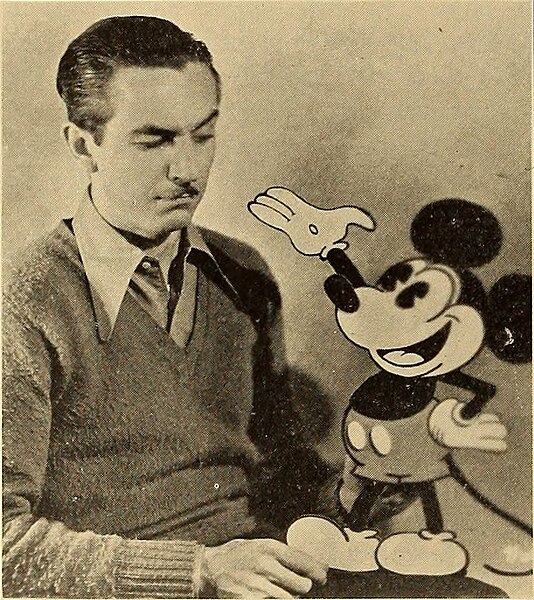
Numerous unofficial versions of this IP character design have been created over the years in an attempt to profit from fraud due to Mickey’s popularity. Still, Disney successfully protected the character thanks to the robust legal framework created around it.
In summary, thanks to legal protections, all those fraudster companies that tried to imitate Mickey Mouse’s design in different ways ended up achieving nothing.
2. Hello Kitty (Sanrio)
Like Mickey Mouse, the Hello Kitty character created by Sanrio was the victim of many imitation attempts, all hoping to take advantage of its popularity.
For instance, several counterfeit products linked to Hello Kitty, such as clothes, accessories, and toys, were made, none of which were by Sanrio, her owner.
However, the Japanese company has also successfully protected its property with trademarks and other licensing forms globally, stopping unauthorized productions from being sold in the market and allowing fraudsters to profit.
Nevertheless, fake goods related to this fictional character are still available in countries with weaker copyright laws but not developed countries where global regulations are respected.
3. The Pillsbury Doughboy (Pillsbury)
Several Pillsbury competitors have tried creating look-alike characters to benefit from the favor of Pillsbury Doughboy, attempts that were both unethical and illegal.

A notable example was a baking company that tried to attract attention to its product by making this dishonest move. Pillsbury sued them, and they were convicted in court.
By licensing its IP character, Pillsbury triumphed in keeping those food companies that wanted to use the Doughboy at bay. Trademarks and other protective actions helped their customers not be confused by a look-alike character and kept their brand’s image safe.
4. Tony the Tiger (Kellogg)
Another big name in an industry that has faced several illegal attempts to steal its IP character and benefit from its good reputation.
This company that produces cereal created an IP character, a tiger named Tony the Tiger, many years ago.
Over the years, numerous rivals attempted to imitate the character by creating a tiger with a similar appearance, even the same colors, to deceive the market and ride on Tony the Tiger’s vogue.
Kellogg vigorously protected its character with the help of law and legal trademarks, stopping all those brands that wanted to misuse the company’s fame for their own good.
5. The Geico Gecko (Geico)
Similar to other well-known IP character designs, Geico Gecko wasn’t safe from imitators over the years. As expected, smaller insurance companies that wanted to be seen by Gecio’s target audience tried to design similar mascots and characters, aiming to make people think they’re reputable insurance companies, just like Geico is.
The important thing that those small cheaters wouldn’t consider was that Gecio is a big industry name with a group of well-trained legal advisors in-house—the people who licensed and held multiple trademarks on their IP character in various advertising campaigns.
As a result, any attempt to imitate the Geico Gecko design was fiercely opposed, and no company succeeded in replicating this famous IP character’s unique appearance and role.
Some lesser-known or regional IP characters:
6. Amul Girl (India)
The Amul Girl is the mascot for the Indian dairy brand Amul. Known for her witty and topical advertisements, she has been used for decades to comment on current events with a humorous touch.
7. Kumamon (Japan)
Kumamon is a bear mascot created by the Kumamoto Prefecture in Japan to promote tourism. It has gained immense popularity both regionally and internationally, generating significant revenue through merchandise licensing.
8. Chef Gusteau’s Rat (France)
This character was developed by a small French bakery to promote their unique line of baked goods inspired by the animated film Ratatouille. Though unofficially tied to the movie, it has become a local icon for tourists visiting Paris.
9. Ola Volo (Canada)
Ola Volo is an illustrated character representing a Canadian brand specializing in sustainable fashion. The character features intricate designs inspired by nature and local folklore.
10. Lapichki (Eastern Europe)
Lapichki is a set of adorable animal characters developed by a small Eastern European bakery chain to promote its pastries. Each character represents a specific product or flavor.
11. Harapeko (Singapore)
Harapeko is a lion mascot designed for Singapore’s food festival scene, symbolizing the nation’s multicultural cuisine. The character appears on promotional materials and merchandise during food festivals.
12. Ajay the Elephant (Thailand)
Ajay represents a Thai eco-tourism company focusing on wildlife preservation. The character educates children and adults about the importance of protecting elephants.
Shifting our entire focus to licensing the IP character, we’ll discuss this aspect more in the next section and answer a frequently asked question.
Legal Considerations of IP Characters
Take a look at the previous section and its examples again. All well-crafted IP characters are susceptible to misuse by scammers, and that’s the primary reason they need protection.
Character licensing prevents unauthorized use and imitation of your business’s IP character.
Additionally, this crucial action cause the following advantages:
- Offering brand consistency and integrity
- Providing multiple licensing opportunities
- Preventing fraud and faked productions
- Protection against illegitimate derivatives
- Providing international protection
- Offering the opportunity to take legal action against swindlers
- Demolishing any possible legal disputes
These are the reasons that justify the necessity of licensing the IP character.
Different Types of IP Protection
From an expert’s point of view, there are three types of IP protection:
- Copyright: Once you finish creating the design, this form of preservation automatically applies to it. You can exclusively reproduce and use the IP character in various media and campaigns thanks to the copyright.
- Trademark: Businesses need to secure their fictional characters firmly with trademarks. In simple terms, trademarks protect a character’s name, logo, and all other distinguishing elements.
- Patents: This form of protection is much more common when submitting ownership of inventions. However, in some rare cases, it’s also been used to secure IP characters. For example, a patent can shield an innovative company’s creative new technique for creating animations.
After familiarizing yourself with licensing’s various forms, let’s provide you with the answer to an inquiry you may wonder about.
Time-Limited Protection
According to legal counselors, there is no such thing as infinite protection of your IP character. One can’t compare ownership of intellectual property with the way ownership of physical properties works.
Take this as an example:
When you buy real estate, you’ll own it until you decide to sell that property. However, licensing the IP character will grant you limited privileges.
This law goes beyond IP characters and applies to any kind of intellectual property.
Copyright laws provide long-term protection, often the life of the creator plus 70 years in many jurisdictions, while trademarks can be renewed indefinitely. Licensing agreements, however, are specific to the terms agreed upon by parties.
Therefore, your legal team should monitor the time left for ownership closely and take required actions to renew the license at the exact moment before the IP character goes into the public domain, in which everyone is allowed to use it, despite the goal they’re trying to achieve.
Let’s move ahead and examine the path for character licensing.
How Can You License the IP Character of Your Brand? What’s the Procedure?
After finalizing the creation of the IP character design, as mentioned earlier, your legal department must take the necessary actions for character licensing.
Honestly, it’s not that easy, and if your team lacks professional legal advisors, managing it can be quite challenging.
Anyway, registering the IP character goes through this procedure.
-
Registering Trademark
Earlier in the blog, we discussed the role of trademarks in protecting intellectual property. According to that data, you should search for existing trademarks in your country’s trademark databases. For example, if your company is located in a European country, you should search EUIPO. The USPTO database is the appropriate source to scour if you’re in the US.
Once you have gathered enough information on existing trademarks, specifying the trademark’s class is your next step. Each industry has a specific class, and you should be aware of your related industry to advance. Additionally, in this step, all detailed descriptions, such as logos and images, must also be included.
Now, you’re fully prepared to go to the trademark office and file your request to trademark the IP character legally. Note that the approval process may take months to get accepted, and you can’t do anything but wait patiently.
-
Take Required Actions for Copyright Protection
Shielding the IP character with copyright laws is another effective way to protect the IP character of your brand.
To take advantage of this robust law, prepare all documents that prove you and your team are the creators of the fictional character—the more explicit the documents, the better.
According to the local rules of your headquarters location, register copyright. For example, US-based firms must file their request via the U.S. Copyright Office. Research the law of your country to find out where you should submit your request in this regard.
Following the approval of your request, you’ll receive a certification that proves you own the IP character, and the law protects your property against any malicious attempt.
-
Submit Patent Design (Optional)
As mentioned earlier, using patents to protect IP characters is less common. However, in some circumstances, patents can act as an extra guard that ensures the highest level of security.
Patents apply to functional or ornamental designs (e.g., toys) but are not typically used for the protection of fictional characters, which are better covered under copyright and trademark laws.
To benefit from this form of protection, you should draft a patent application in the first step. This includes detailed drawings and specifications.
After preparing the needed requirements, go to the patent office of your jurisdiction and apply your request for ownership submission.
Don’t forget that patents are time-limited and need to be renewed after a while.
-
Take Action for Global Protection
To ensure IP character design is protected all around the globe (at least in developed countries where laws are enforced), use international accords such as the Berne Convention and Madrid Protocol. The first ensures compliance with copyright laws, and the latter relates to your IP character’s trademark protection.
Moreover, it’s suggested that WIPO, which stands for World Intellectual Property Organization, be used for broader coverage and security.
These treaties facilitate protection but do not guarantee enforcement in all countries, especially those that are non-signatories or have weak enforcement mechanisms.
-
Monitor and Violation of Rules
Protecting the IP character with the mentioned rules and solutions is not the end of the road since many try to bend or even neglect the law for their vicious objectives.
As a result, you must monitor for any violation and unauthorized use of the character with a keen eye. This way, you can protect the IP character adequately and sue any individual or company that tries to steal it.
As stated above, this task can be challenging and time-consuming, so we recommend outsourcing the whole process.
Is it Obligatory to Use a Specialized Company Service to License the IP Character?
No. Licensing the IP character through specialized companies is not mandatory. Nevertheless, not all businesses have the required sources and knowledge to proceed on this challenging path.
Therefore, if your business is categorized in this group of firms, it’s better to outsource the job to companies with rich experience in this field. At the same time, you’re free to do this task independently.
Dream Farm Agency Will Make and License IP Characters for Your Brand
Besides all our services, Dream Farm Agency experts are fully prepared for the process of IP character design based on your branding guidelines and also licensing the outcome to prevent any fraudulent use of it.
With a proven track record of previous work on our resume, you can trust us to create a well-established IP character for your brand, which will benefit your business in numerous ways.
So, look no more and contact our team to discuss the details of this matter.
Nikan


